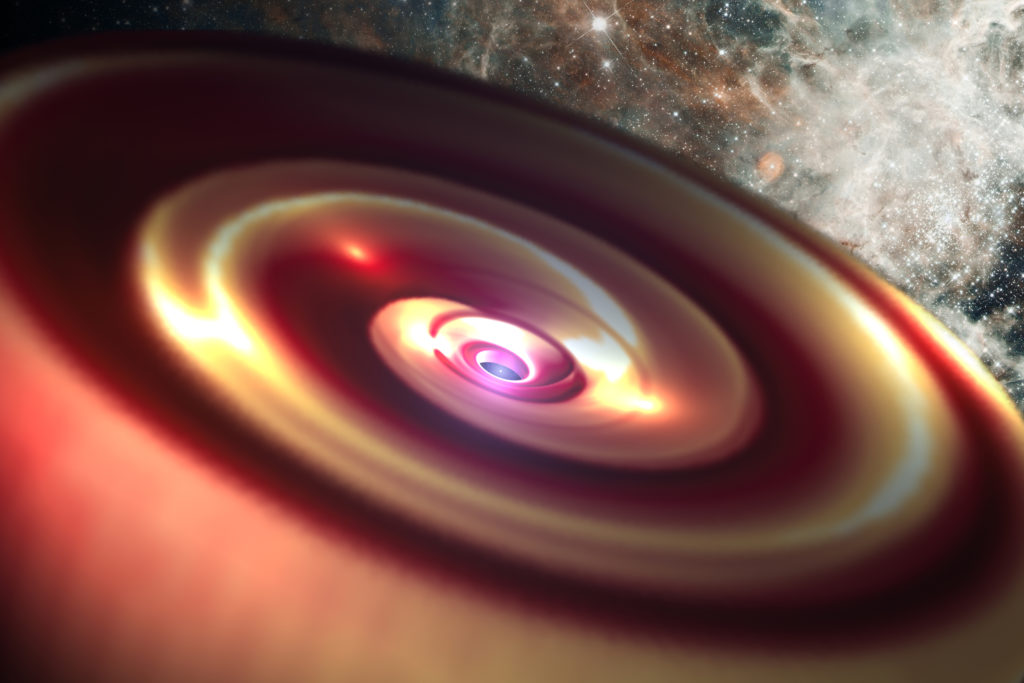Gas-rich “proto-planetary” disks surround young, still forming stars, feeding them through accretion of dust and gas. These are the birthplaces of planetary systems. This image shows a simulation of a possible gas disk progenitor for the real exoplanetary system HR8799. Today, HR8799 has four, six-Jupiter-mass planets, 30 million years into their lives, surrounded by a diffuse disk of planetary debris. With computational fluid dynamics simulations such as the one depicted here, we study the early lives of planets, still embedded in their birth proto-planetary disk, in order to understand how planetary systems like HR8799 came to be.
In this image (created in Maya), the color follows the temperature, with white tracing the hottest (and generally densest) material. Four planets are clearly visible as hot dense knots, accreting gas and creating spiral patterns in the disk. The background image is 30 Doradus, the most active star-forming region known in the Local Group of galaxies.

Credit: Aaron M. Geller and A. Dempsey. Simulation performed by A. Dempsey. CIERA/Northwestern

